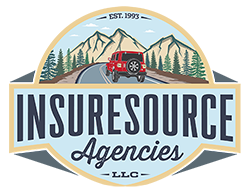See how easy it is to get a quote now without even making a phone call.
Automated Quoting
When I bought my first IBM personal computer, I used a spreadsheet program called Lotus 123. I plugged in all the rating factors from each of the companies. Then, I programmed a macro to calculate the price when I entered the prospect’s age, gender, and other relevant factors. My mom used to tease me about how she could estimate the cost in her head faster than I could using my "dumb box." She had hundreds of prices from twenty different companies memorized. As I perfected my program, I could soon calculate the costs faster than her, especially if the client had multiple cars and drivers.
Soon, the companies stopped providing us with manuals and instead sent us floppy disks containing their proprietary software. That was a nightmare because I’d have to insert each disk, quote that company, pull that disk out, and insert the next one. I learned how to read the factor tables hidden on their disks and plug them into my spreadsheet.
Rating a policy was the first thing that technology made more efficient. We still had to fill out forms and applications by hand. The challenge forced me to learn how to format an application in Microsoft Word that would resemble the company's original design. I could tab between fields and complete an application with keystrokes, rather than typing it out on a carbon sheet with a typewriter or filling it out by hand. Insurance company representatives used to visit my office, asking me how I did it. No, I would not give them the technology I worked so hard to create. Soon, their disks would come out with application forms—mine were still more legible.
Electronic Insurance Applications
Along came the comparative rating system. Several vendors competed to gather the various rates and put them into a single data entry system. After inputting the data, the computer displayed the options from cheapest to most expensive, along with all the payment options. Now that saved time. I still used my proprietary system to print the application.
Asking for a check made payable to the company, then stapling it to the application, which was mailed to the company, remained unchanged until the turn of the century. A few companies programmed websites to allow online application completion and data transmission, and some even began accepting credit card payments. Most companies still required a check to be sent in to match it up with the application at the home office. What a nightmare. Checks got lost, and policies were canceled. Soon, they developed a method for the company to electronically withdraw money from the agent’s checking account once the insured’s cash was deposited.
Now, everything is in the cloud. I can still single-enter the client data into a secure website that tells me which company is the cheapest, based on what the prospect declares. Then, the data bridges to that company’s website, where I receive an exact quote after ordering driving records, C.L.U.E. reports, criminal reports, and credit reports. If the prospective client wants the policy, I take the debit or credit card information, plug it into the computer, and email the application to the client for an electronic signature.
Asking again, “Does technology make the experience better?” Regarding insurance quoting, binding, and issuance, I can honestly answer yes. Everything happens lightning fast compared to thirty years ago. No more waiting a month for the policy to get issued. Now it happens real-time, instantly. What we lack, though, is human interaction, a handshake, and eye contact.
